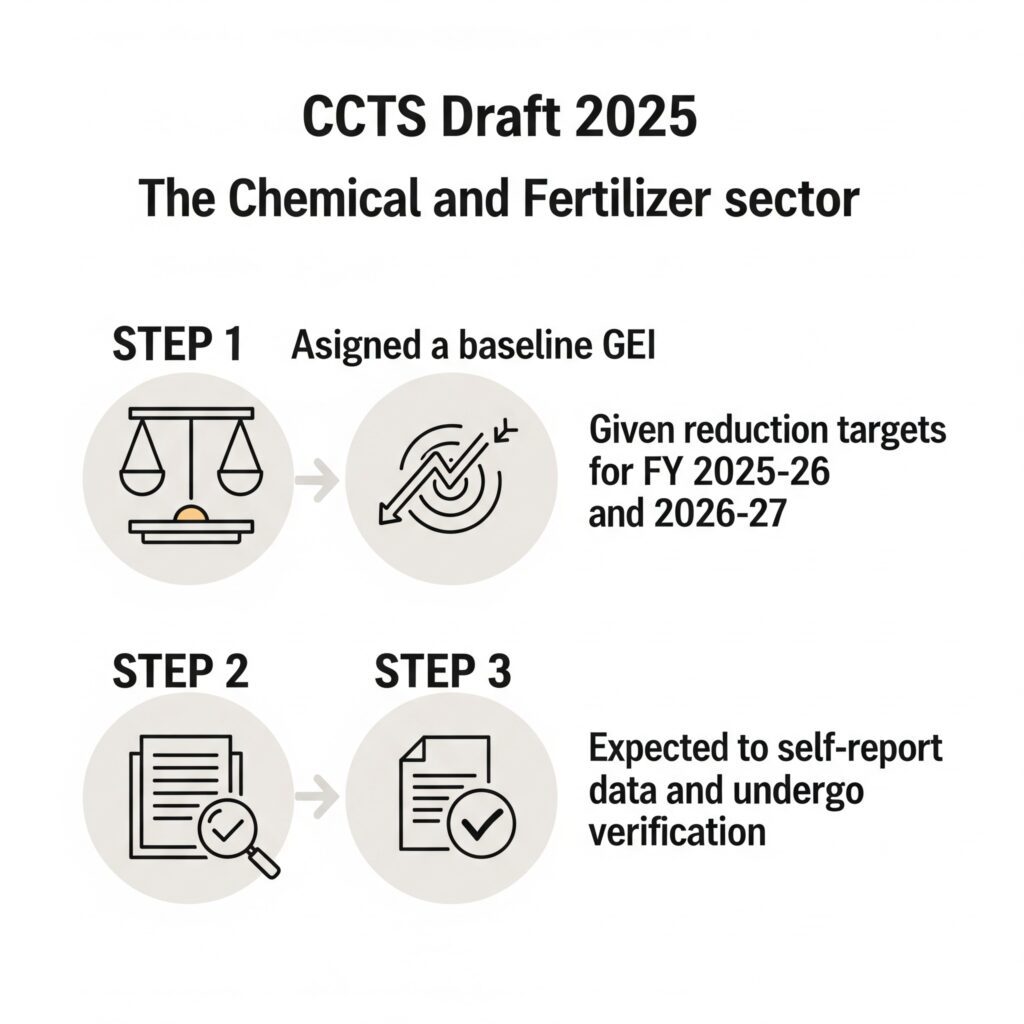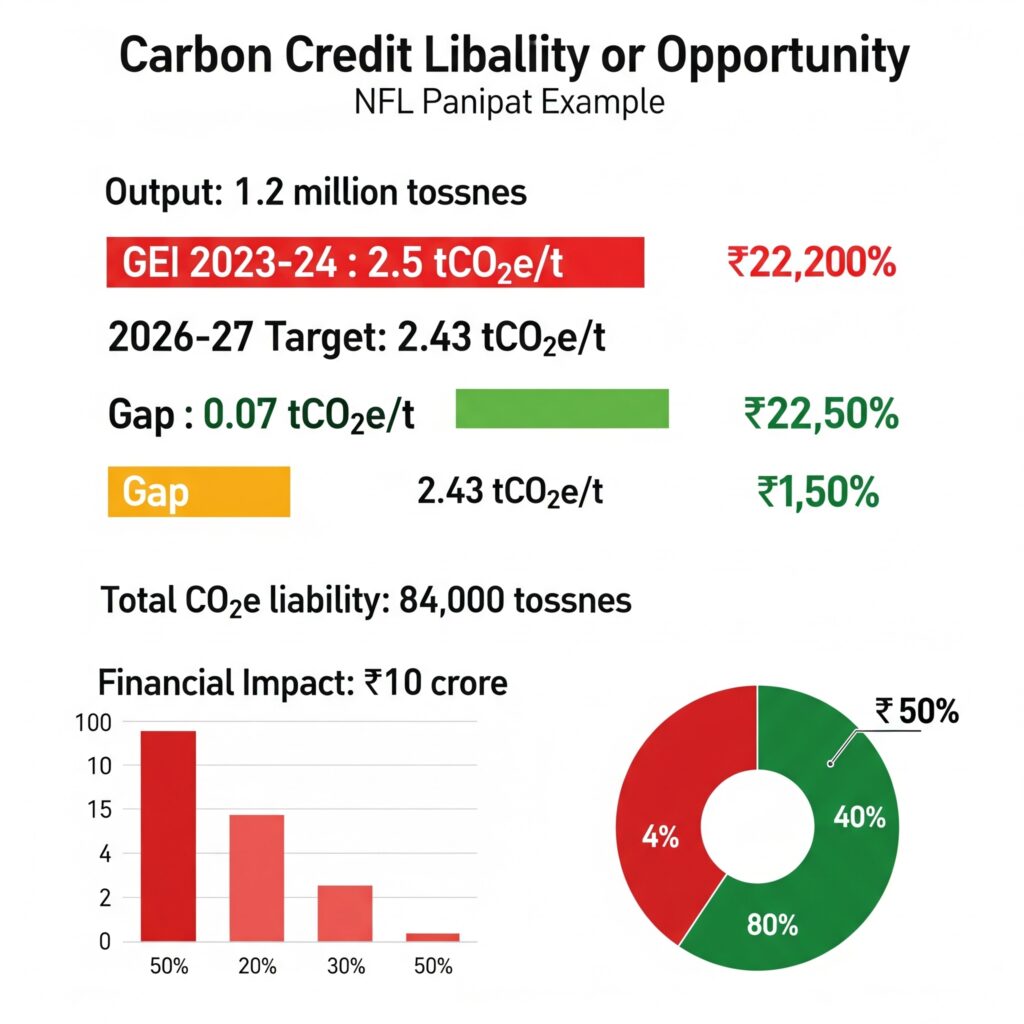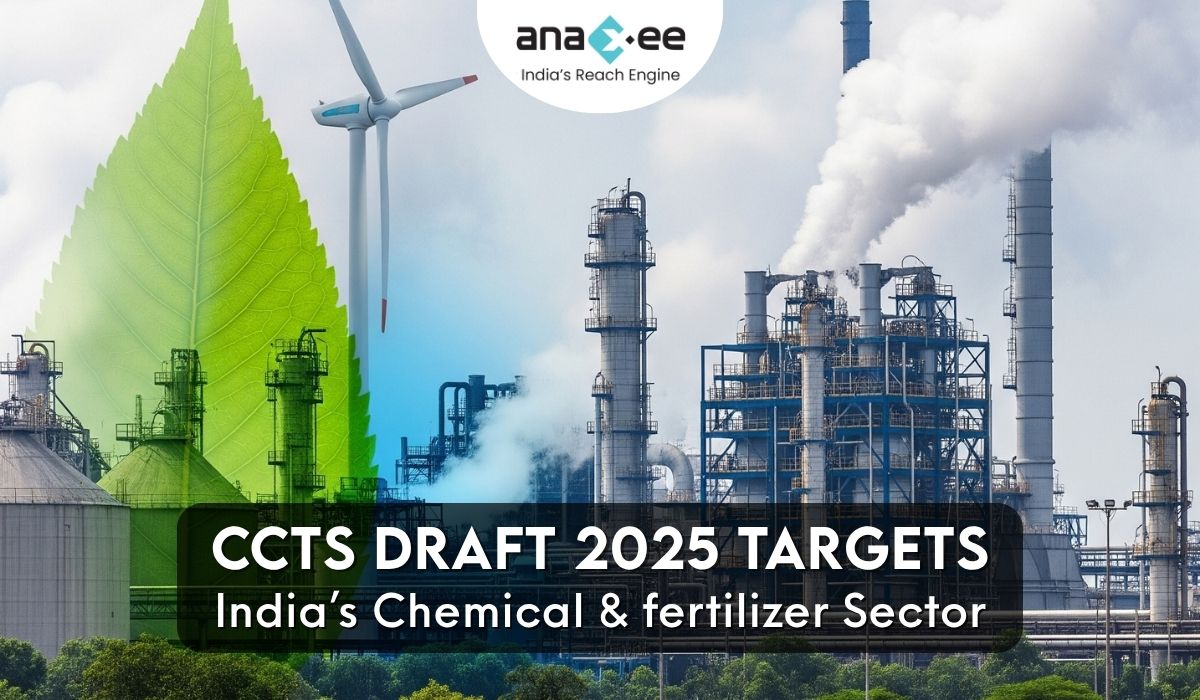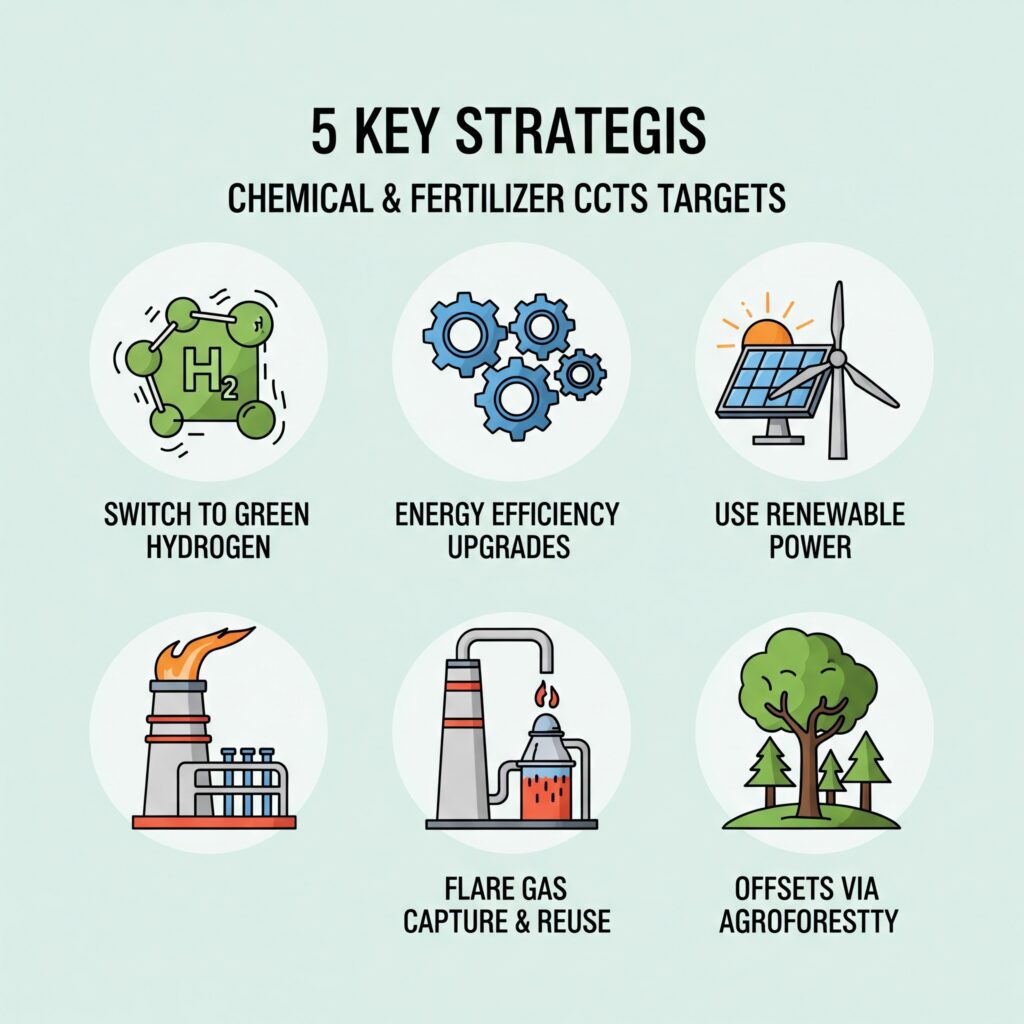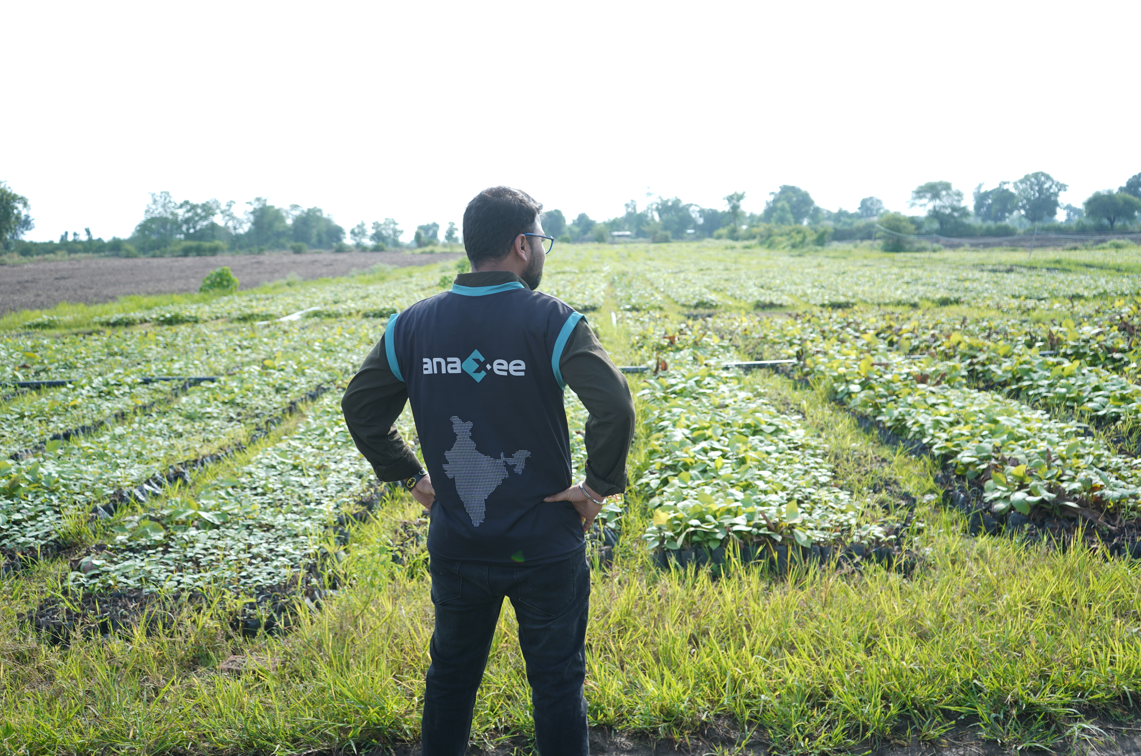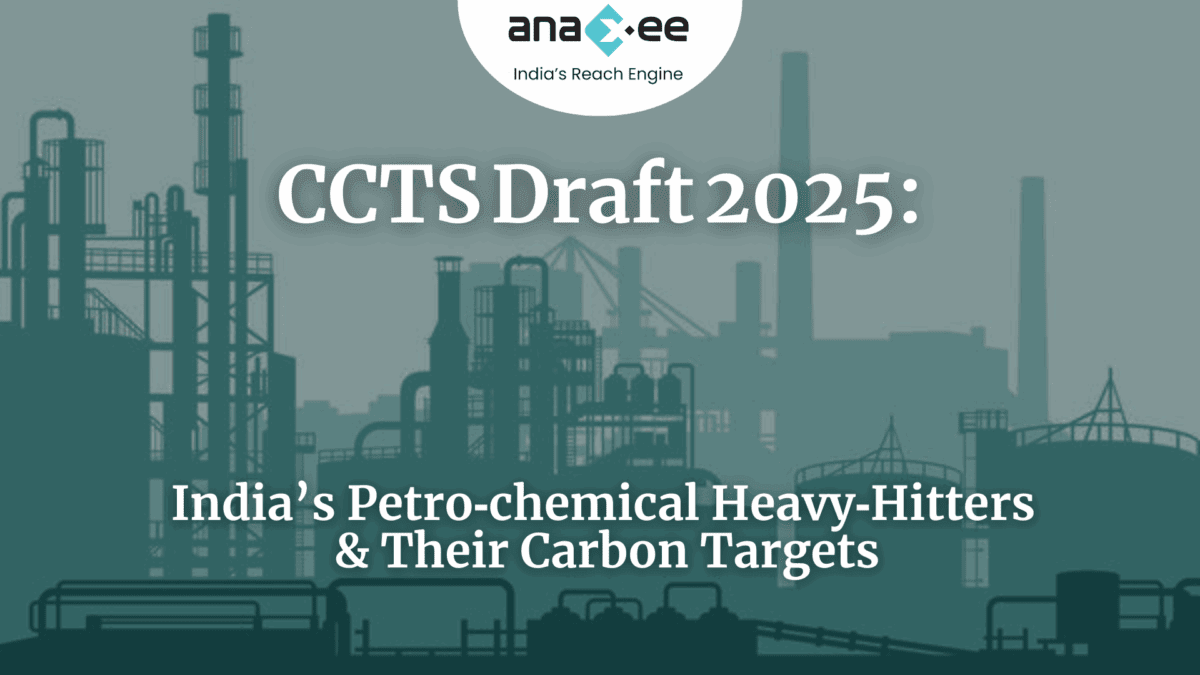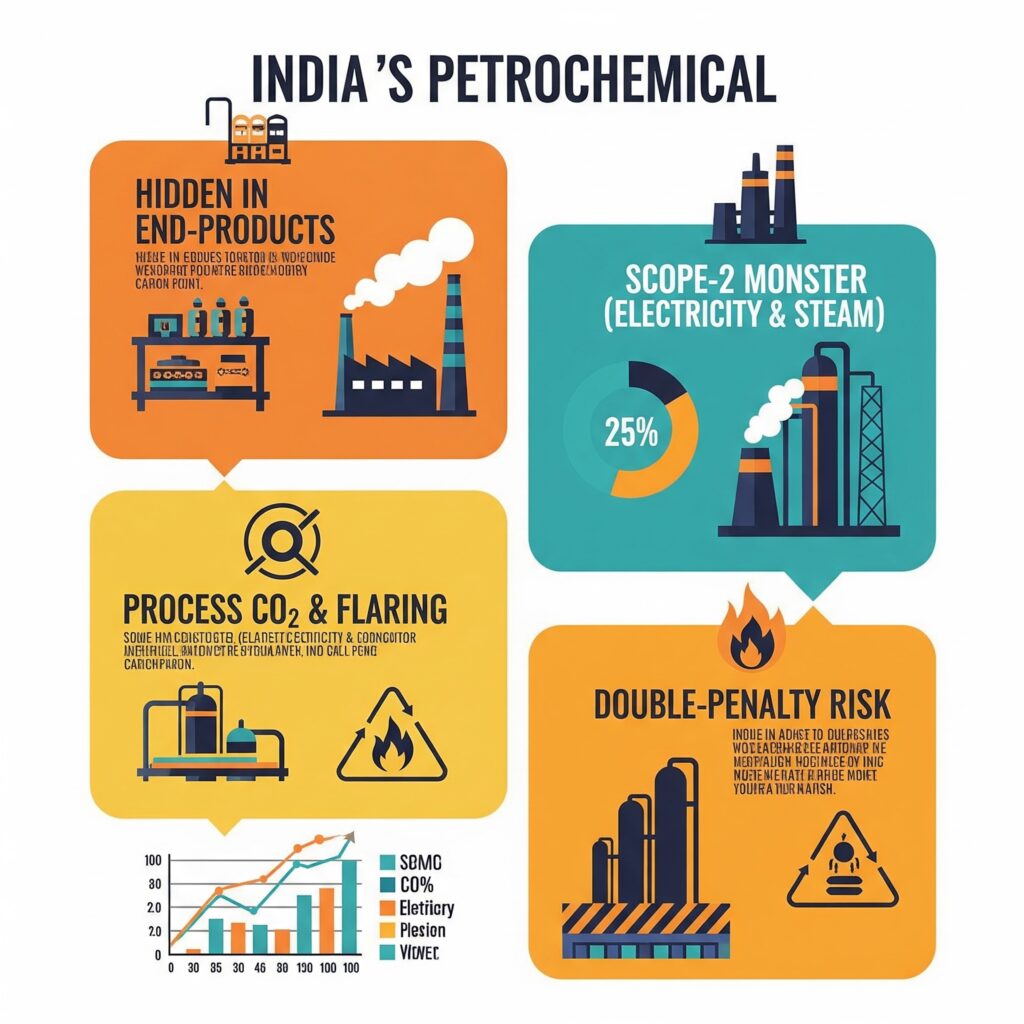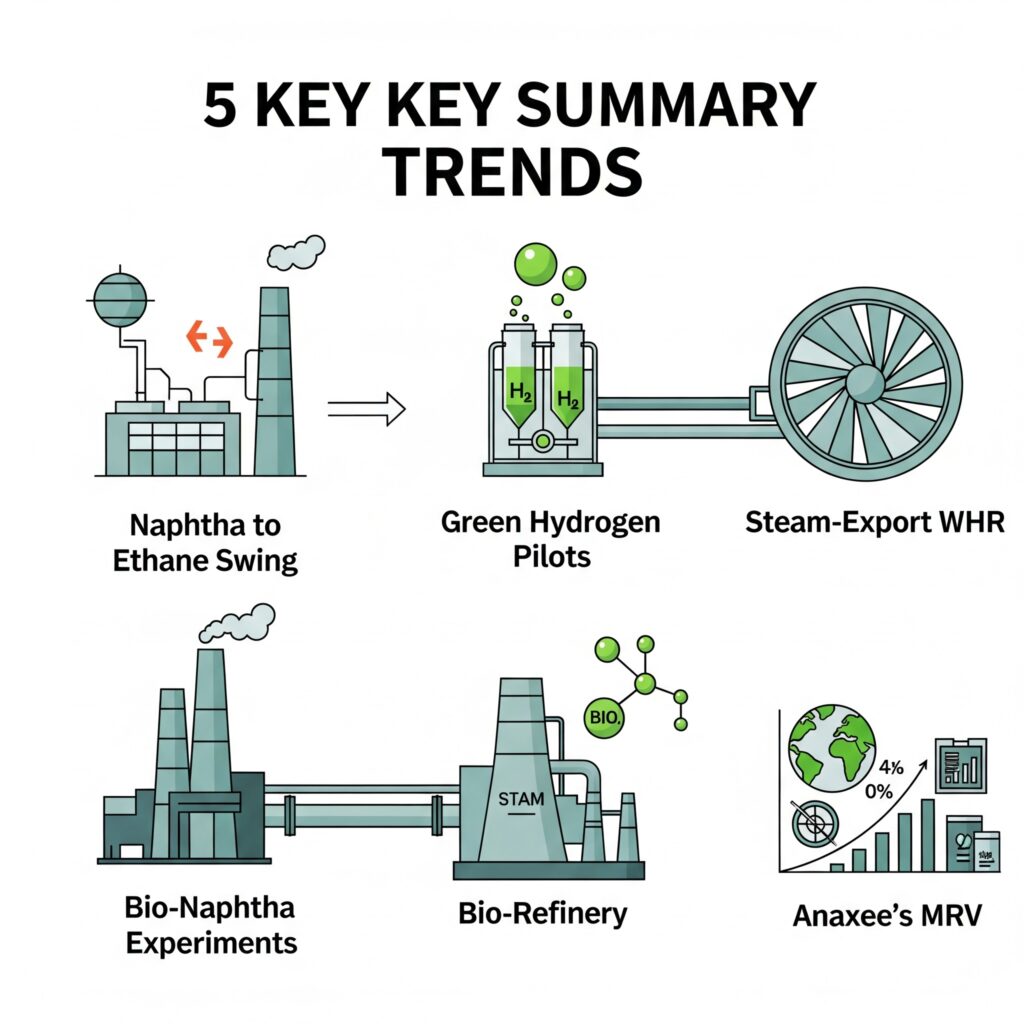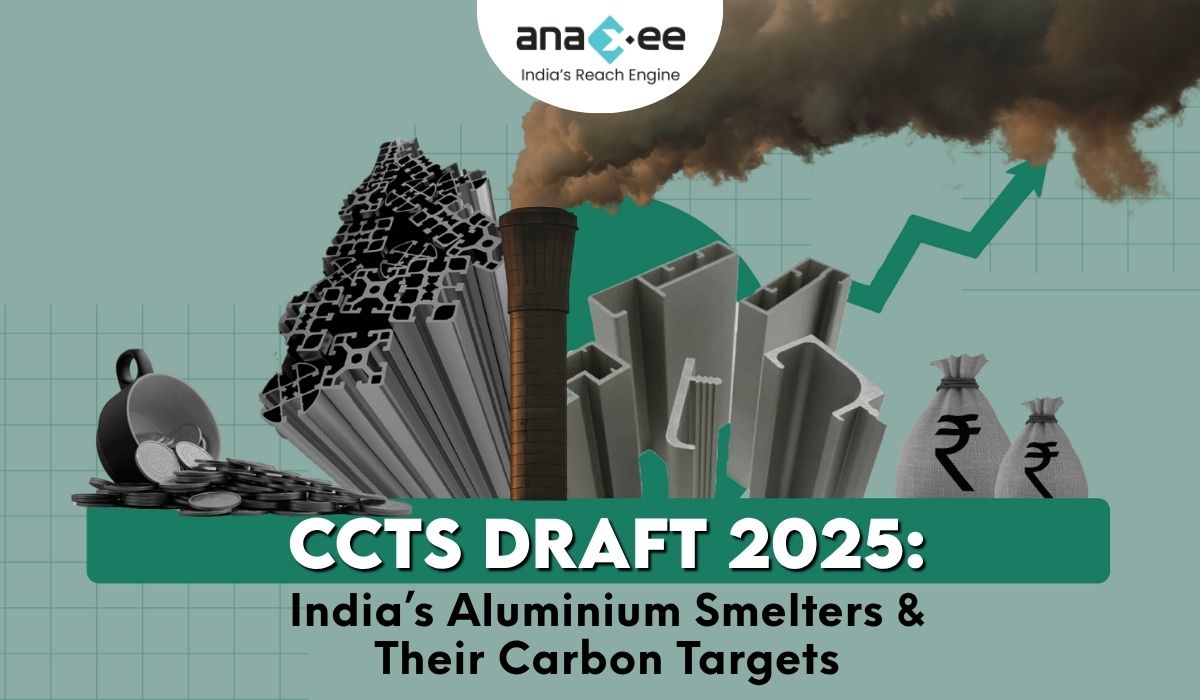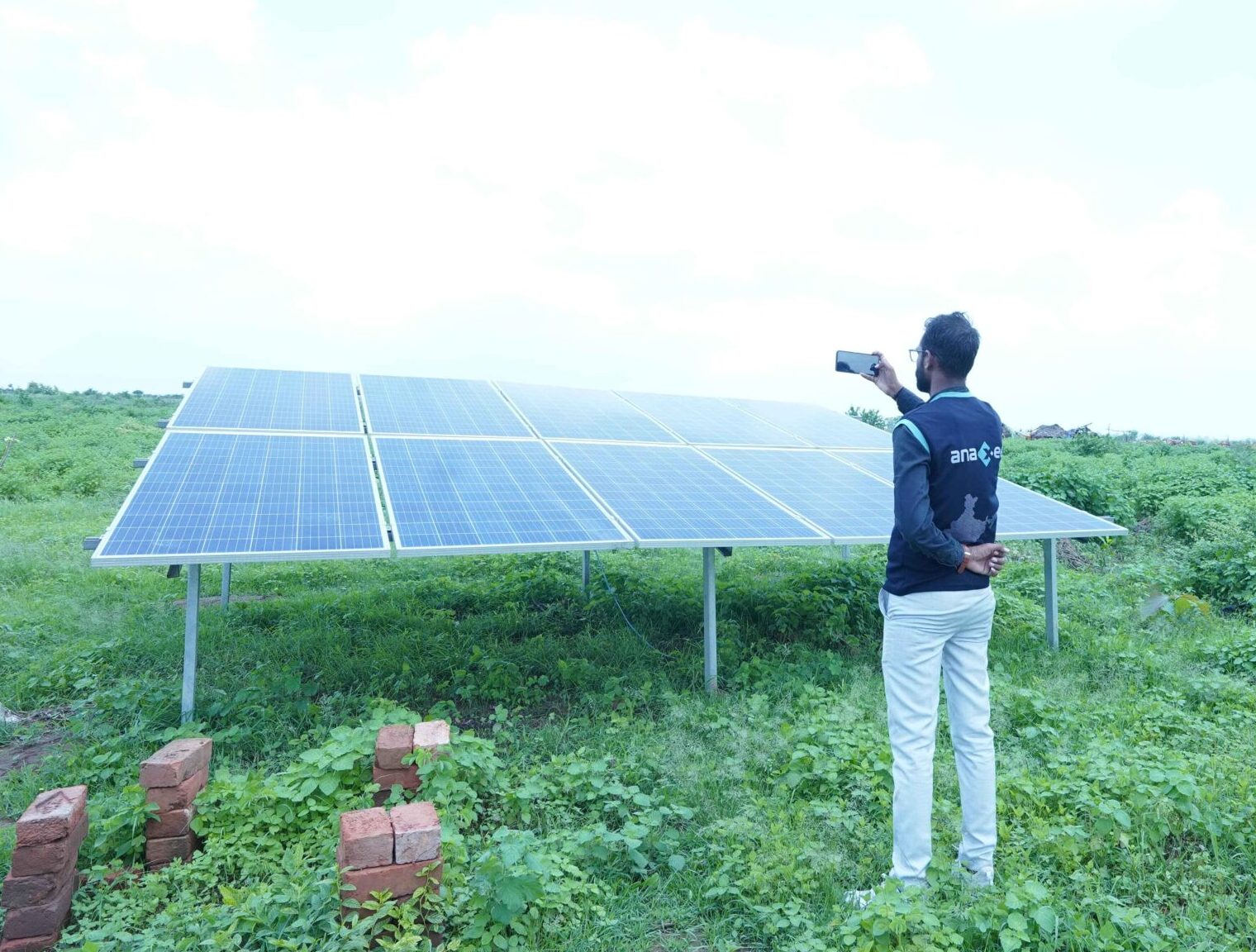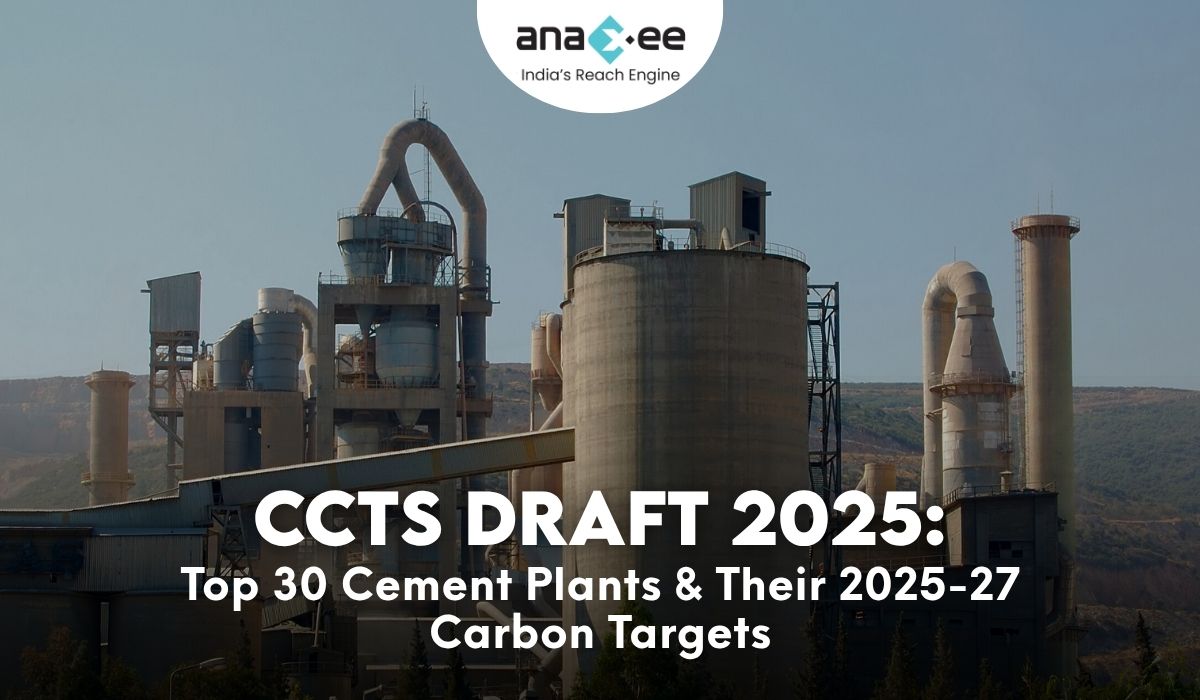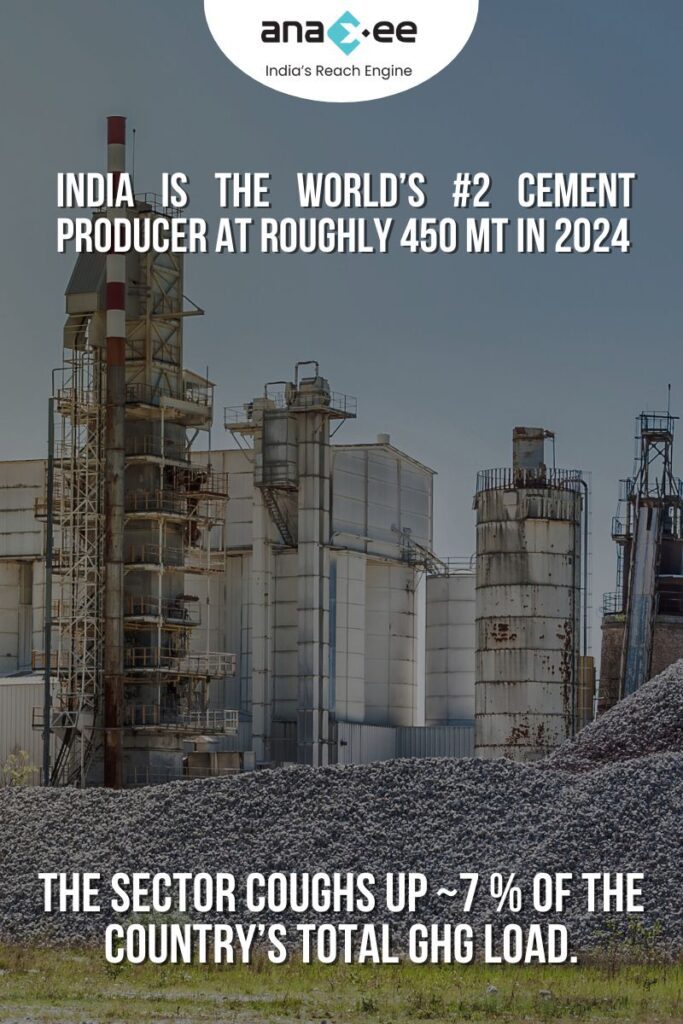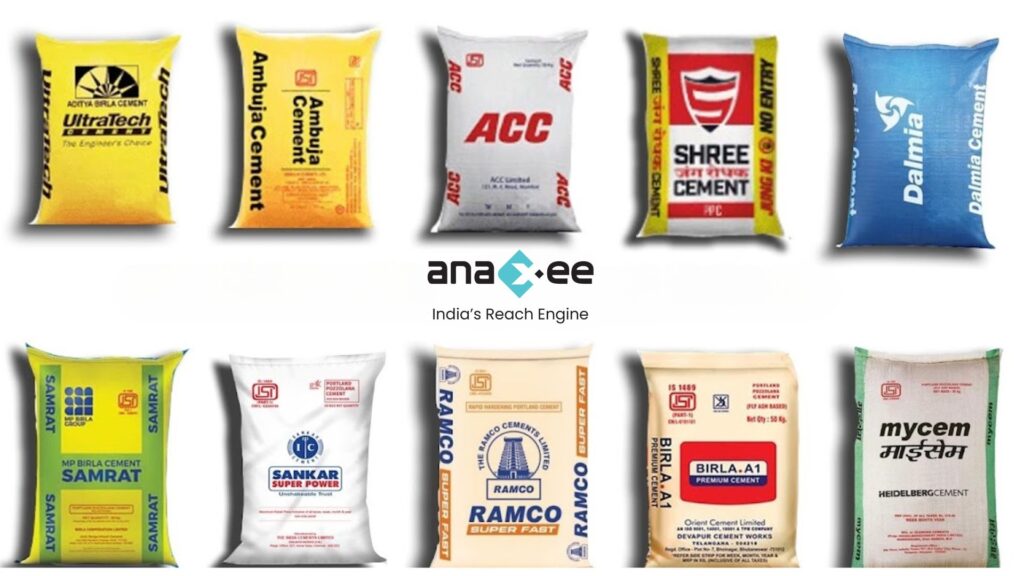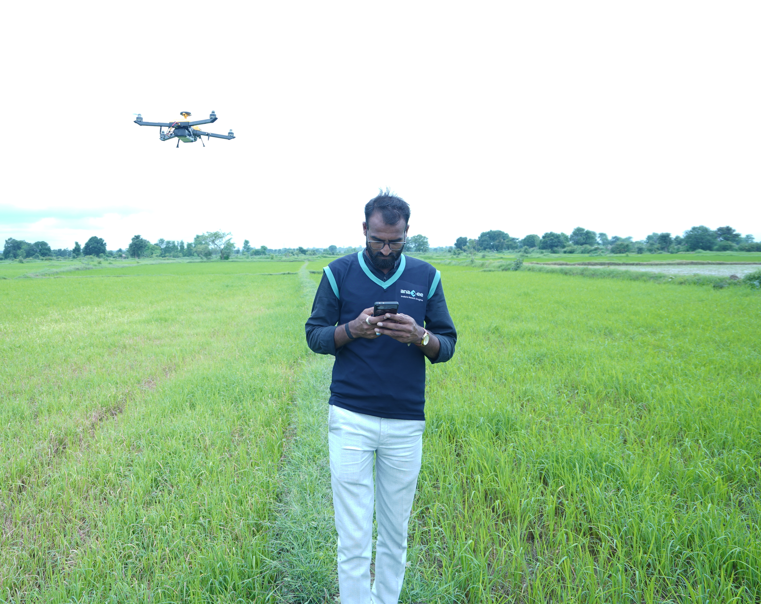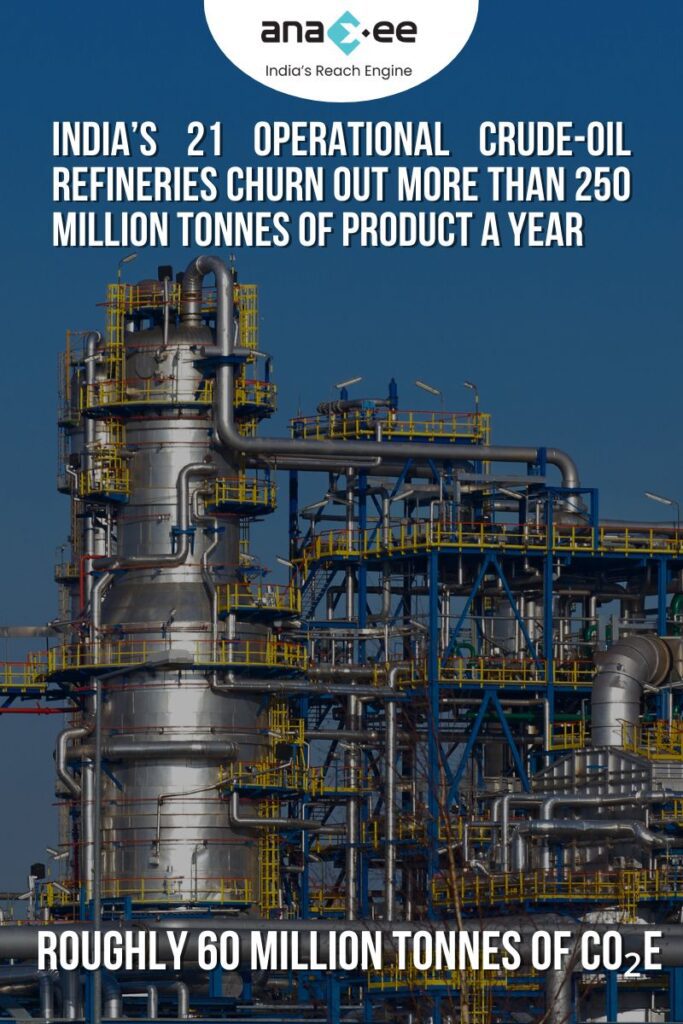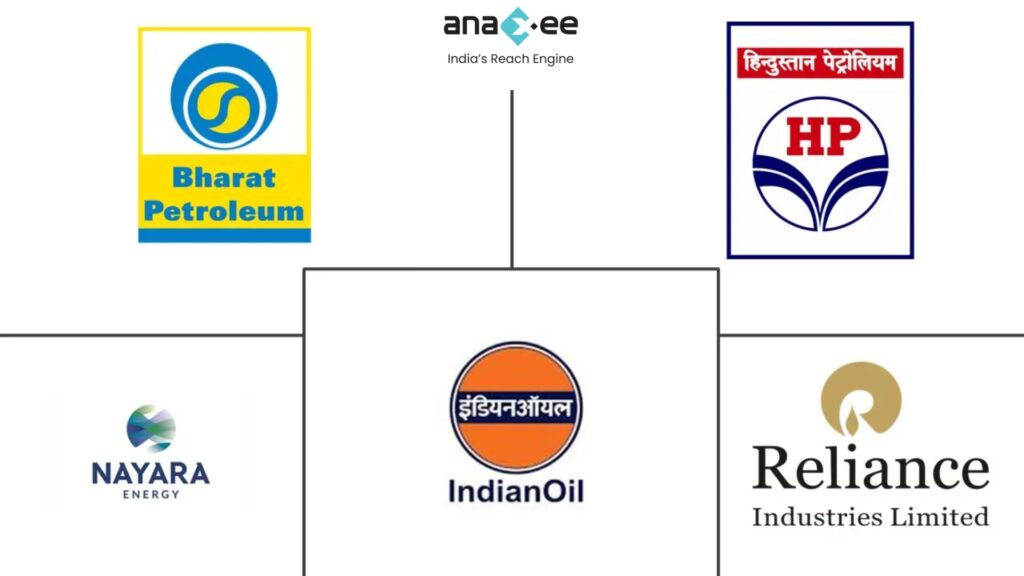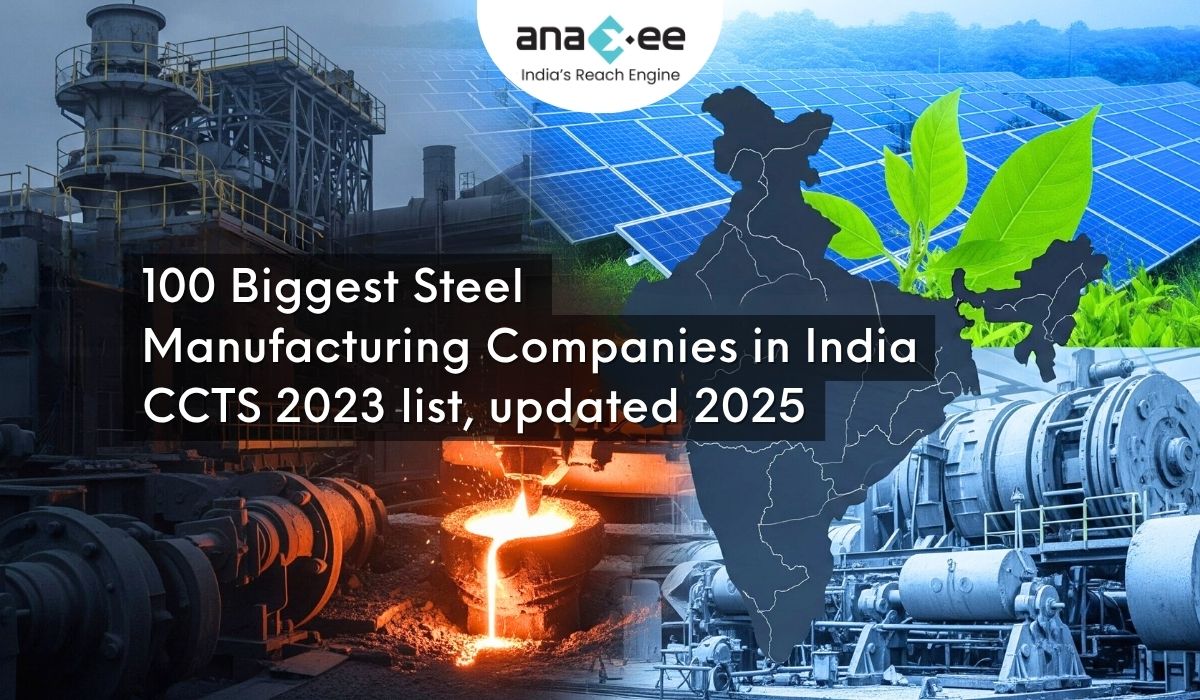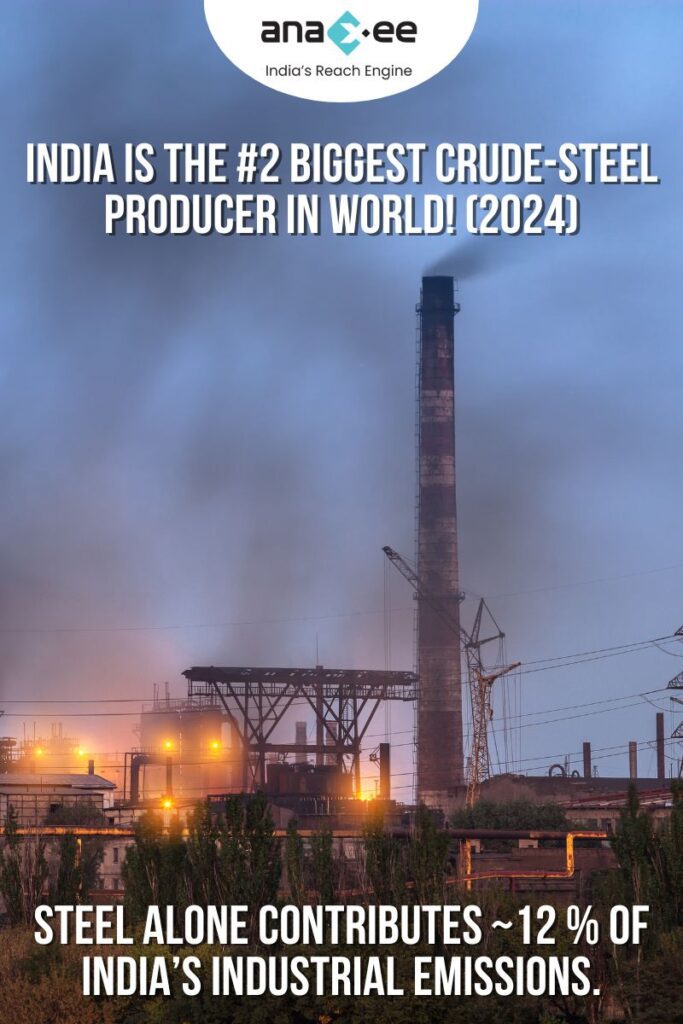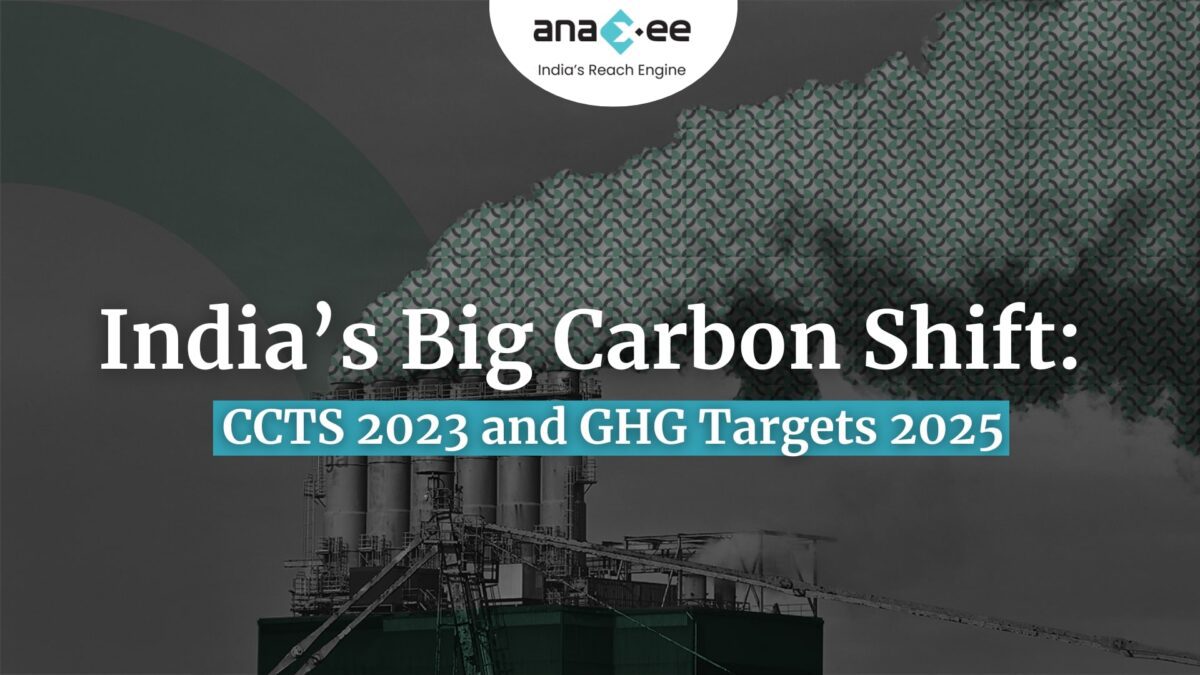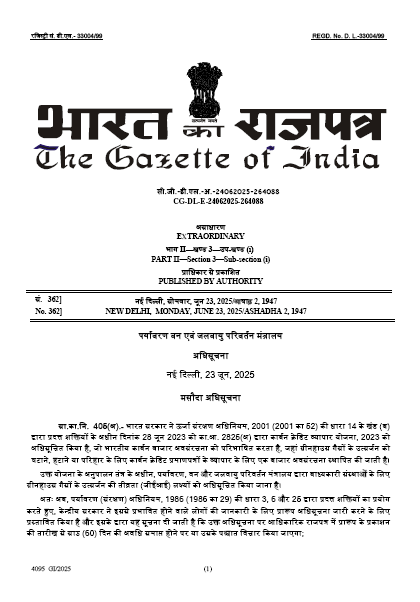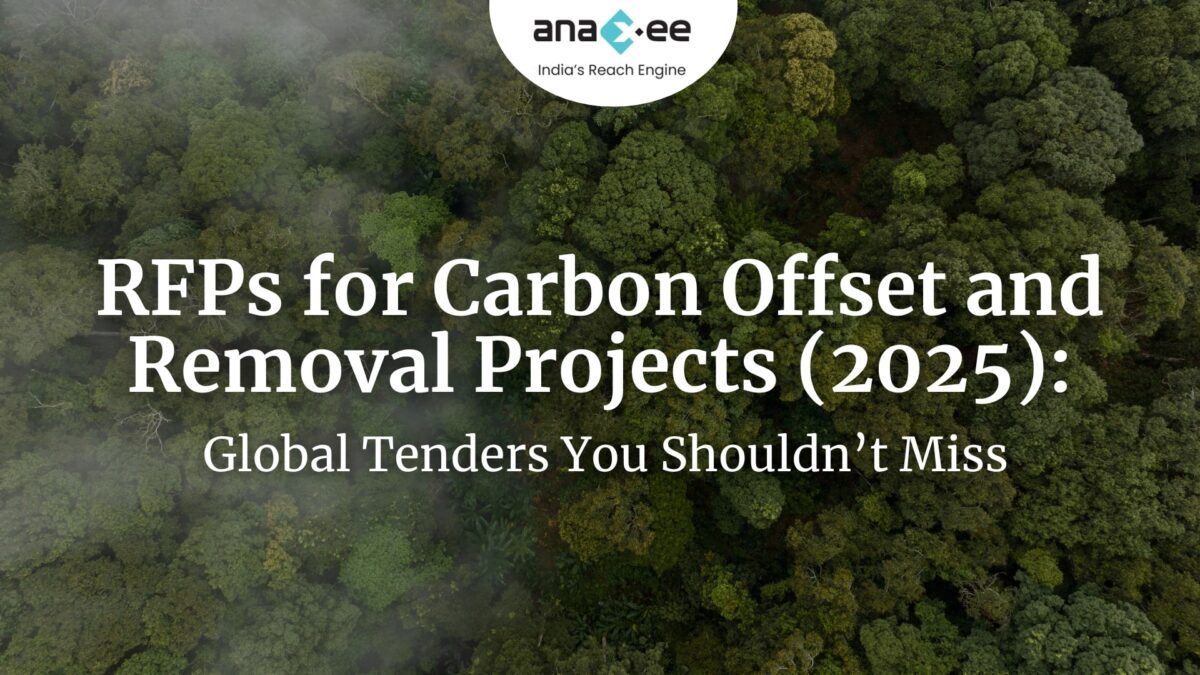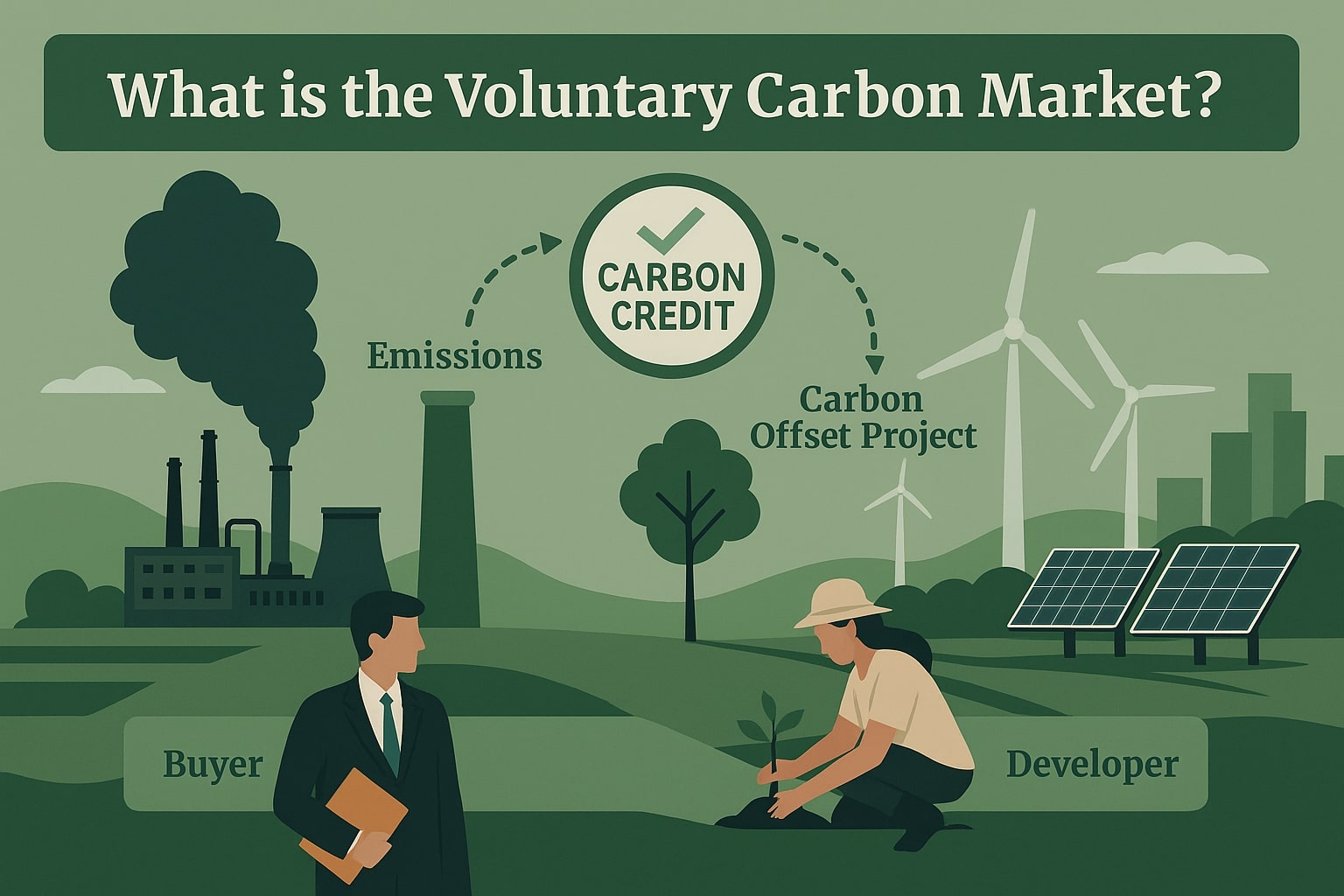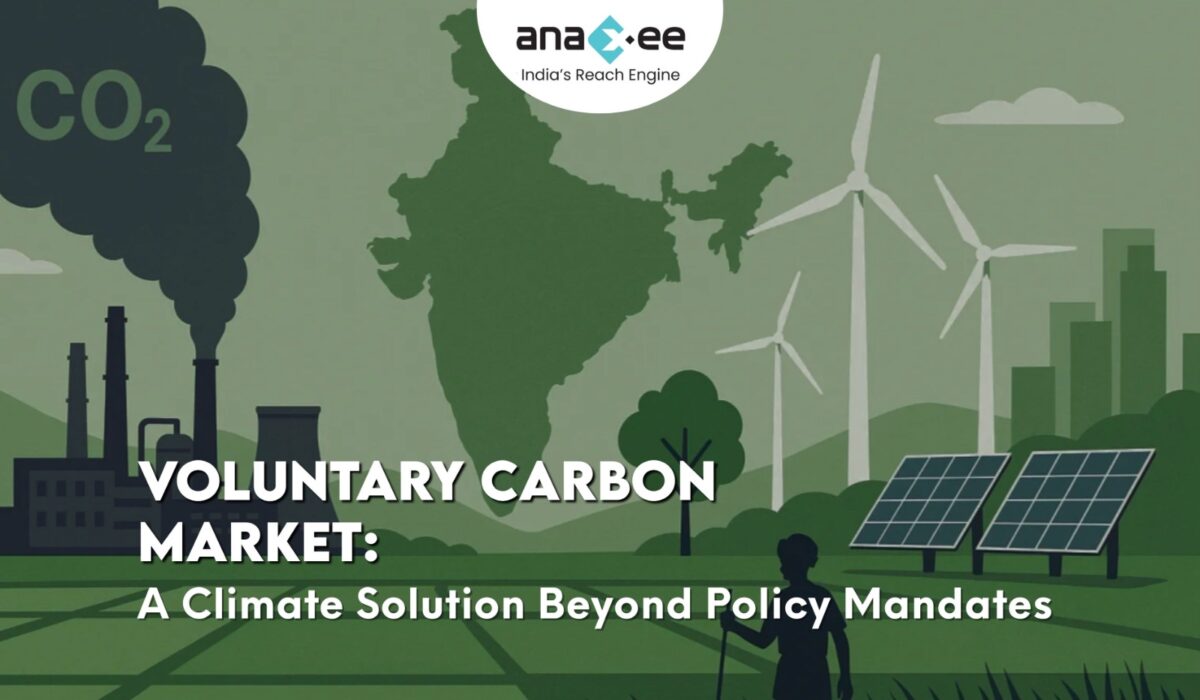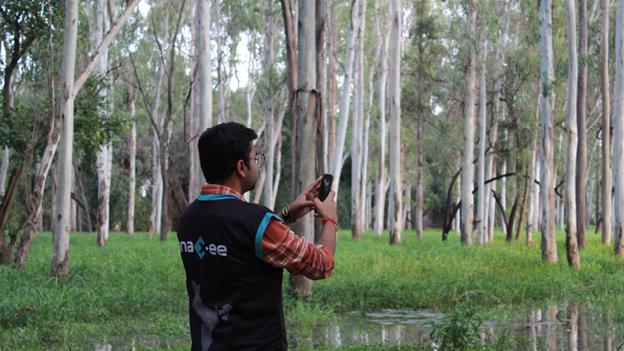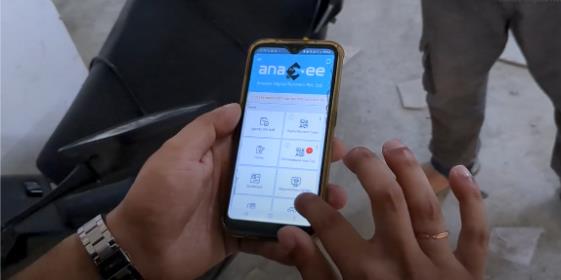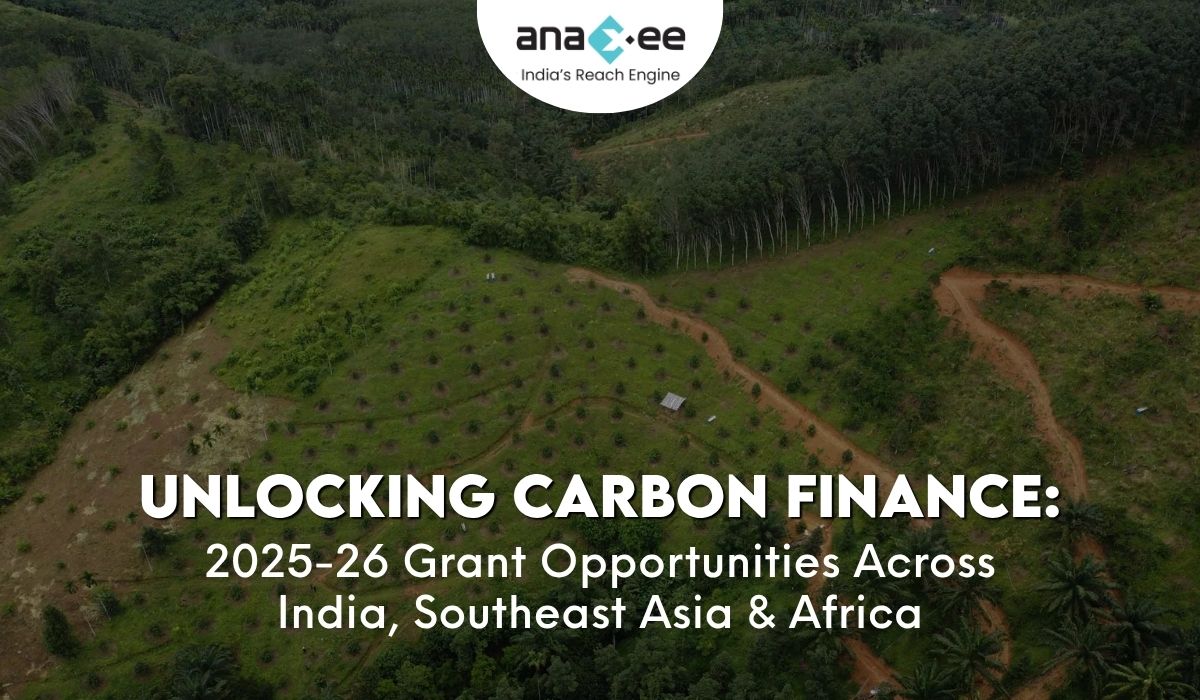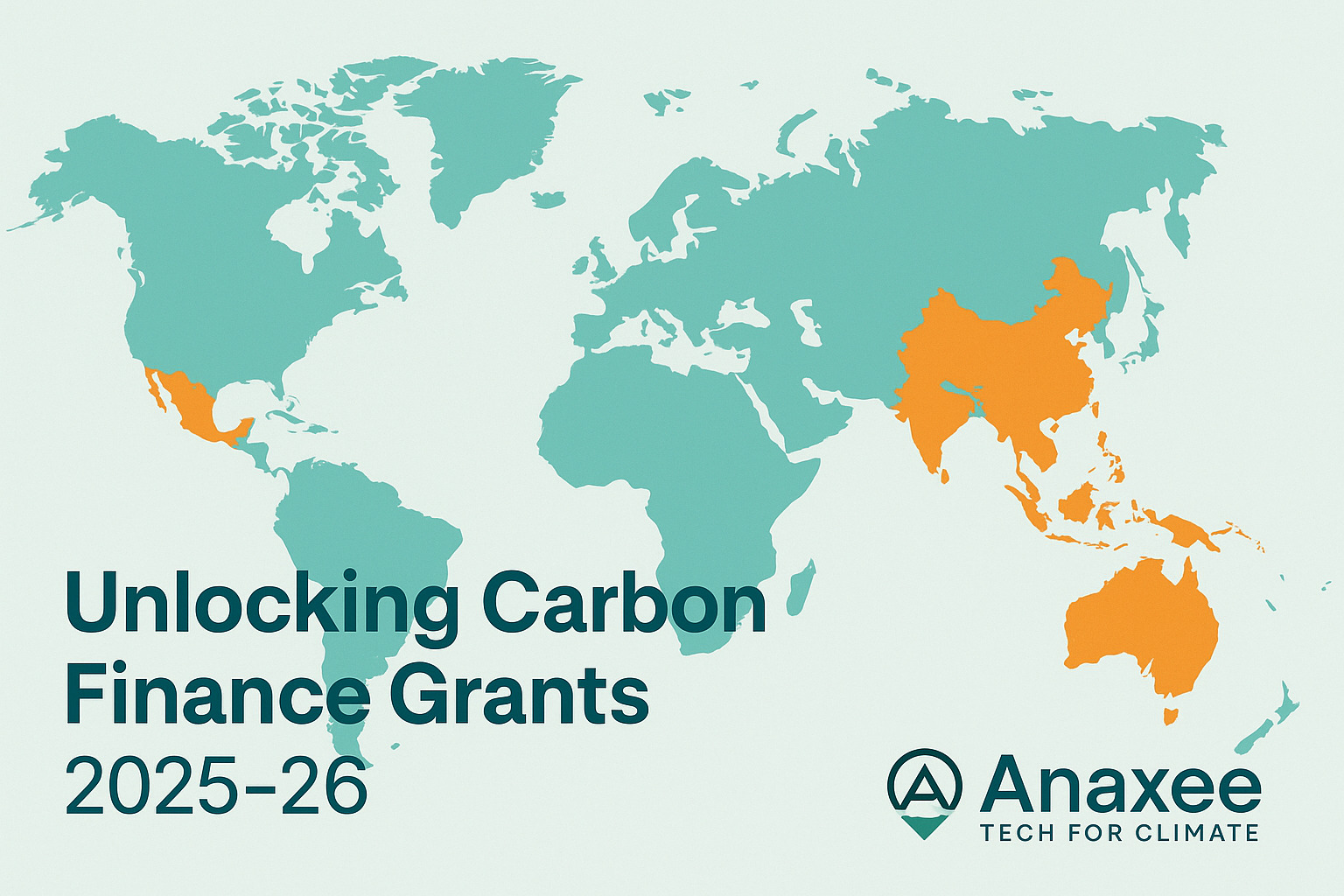| Rank |
Company |
Baseline_output_tonnes |
Current_GEI_tCO2_per_t |
Target_GEI_2025_26_tCO2_per_t |
| 1 |
JSW STEEL LTD, Vijayanagar Works, Toranagallu, Bellary |
11739649 |
2.6293 |
2.5754 |
| 2 |
Tata Steel Ltd, Jamshedpur |
10703390 |
2.3804 |
2.3362 |
| 3 |
JSW Steel LTD, Geetapuram |
8904781 |
2.6662 |
2.6107 |
| 4 |
Arcelor Mittal Nippon Steel India |
7683382 |
2.2701 |
2.2299 |
| 5 |
Bhilai Steel Plant, Bhilai, Durg |
5675148 |
3.1487 |
3.0713 |
| 6 |
Tata Steel limited, Meramandali |
5158574 |
2.9745 |
2.9055 |
| 7 |
Rashtriya Ispat Nigam Limited, Visakhapatnam Steel Plant |
4411374 |
2.9781 |
2.9089 |
| 8 |
Jindal Steel & Power Ltd Chhendipada Road, SH – 63 |
4390777 |
3.1376 |
3.0607 |
| 9 |
Jindal Stainless Ltd, Kalinga Nagar Industrial Complex (KNIC) Jajpur |
4357478 |
0.8792 |
0.856 |
| 10 |
Sail, Bokaro Steel Plant, Bokaro |
4309143 |
3.2056 |
3.1254 |
| 11 |
Rourkela Steel Plant, Rourkela- |
4161241 |
2.9509 |
2.883 |
| 12 |
Tata Steel Limited, Kalinga Nagar |
3464728 |
2.4479 |
2.4011 |
| 13 |
JSW Ste elCoated Products Ltd, B-6, Tarapur MIDC Industrial Area, Boisar, Palghar |
3262392 |
0.1209 |
0.1182 |
| 14 |
Uttam Value Steels Ltd., Bhugaon Road |
3261616 |
0.1488 |
0.1447 |
| 15 |
Jindal Steel and Power Limited |
3252666 |
3.2231 |
3.142 |
| 16 |
Bhushan Power & Steel Limited Village. Thelkoloi and |
3179861 |
3.6421 |
3.5386 |
| 17 |
SAIL- IISCO Steel Plant |
2528925 |
3.2 |
3.1201 |
| 18 |
JSW St eel Coated Product Ltd., Thane |
2509130 |
0.1526 |
0.1483 |
| 19 |
Durgapur Steel Plant, Durgapur |
2304920 |
3.1452 |
3.0681 |
| 20 |
Jindal Stainless (Hisar) Limited, Hisar |
2304098 |
0.492 |
0.4848 |
| 21 |
JSW Ste elCoated Products Limited, A- 10/1, MIDC Industrial Area,Kalmeshwar, Nagpur |
1754590 |
0.1398 |
0.1362 |
| 22 |
Shyam Sel And Power Limited (Jamuria) Jamuria Industrial Estate, Bahadurpur |
1414290 |
2.638 |
2.5818 |
| 23 |
Shyam Metalics & Energy Limited Village: |
1383190 |
2.7124 |
2.653 |
| 24 |
Uttam Galva Steels Limited, Khopoli Pn Road, Village -Donvat, Khalapur, Raigad |
1203926 |
0.1739 |
0.1683 |
| 25 |
TATA Steel BSL Limited, Nifan & Savaroli |
1164472 |
0.1415 |
0.1378 |
| 26 |
JSW Steel ltd., Salem works |
1111813 |
2.7456 |
2.6868 |
| 27 |
Prakash Industries Limited Hathneora |
998386 |
3.0956 |
3.0182 |
| 28 |
ESL Steel Limited, Siyaljori |
997305 |
3.4165 |
3.3254 |
| 29 |
Smridhi Sponge Limited, Mohitpur, Sini |
833210 |
2.0356 |
1.9401 |
| 30 |
Sidhi Vinayak Metcom Ltd, Rugadi, Chandil, Sarikela – Kharsawan, Jharkhand – |
832404 |
3.0416 |
2.9563 |
| 31 |
Shri Venkatesh Iron & Alloys(India) Limited Lapanga, Bhadaninagar, Ramgarh |
829105 |
2.115 |
2.012 |
| 32 |
MAA Ch hinnmastika Cement & Ispat private Limited, Hehal, Barkakana, Ramgarh |
829103 |
2.0149 |
1.9801 |
| 33 |
Narsimha Iron and Steel Pvt. Ltd., At- Marhand, Katkamsandi, Hazaribagh |
825336 |
2.3311 |
2.2059 |
| 34 |
Anindita Steels Limited, Senegarha, Rabodh |
825330 |
2.7866 |
2.715 |
| 35 |
TATA Steel BSL Limited, 23,Site-IV, Sahibabad Industrial Area, Sahibabad |
824687 |
0.1825 |
0.1764 |
| 36 |
Santpuria Alloys Private Limited, Manjhaladih, Gadi Sermpur Tundi Road |
815302 |
2.7154 |
2.5456 |
| 37 |
Shivam Iron & Steel Company Ltd Jambad |
815301 |
4.7826 |
4.6912 |
| 38 |
Atibir Industries Co. Ltd. |
812005 |
2.4681 |
2.412 |
| 39 |
Vedanta Limited (Value Added Business – Iron Ore Business ), Amona, Marcel |
803267 |
2.9119 |
2.8541 |
| 40 |
Tata Steel Long Products Limited, Adityapur, Gamharia, Saraikela Kharsawan |
797058 |
3.8517 |
3.7506 |
| 41 |
Shyam Century Ferrous ( ADivision of Star Ferro and Cement Ltd.), EPIP, Rajabagan |
793101 |
6.2482 |
6.0921 |
| 42 |
Govindam Projects Pvt. Ltd., 37/1630, Kaloshiria, Kuarmunda, Sundergarh, Odisha |
770039 |
3.0274 |
2.8162 |
| 42 |
Khederia Ispat Limited, Naikenbahal |
770039 |
2.6423 |
2.4814 |
| 42 |
Thakur Prasad Sao and Sons Pvt. Ltd., Unit – INaikinbahal, Kuarmunda, Sundergarh |
770039 |
2.371 |
2.2415 |
| 42 |
Pawanjay Sponge Iron Limited, Bijabahal |
770039 |
2.3272 |
2.2024 |
| 43 |
Jai Bala ji Jyoti Steels Limited, Tainser |
770037 |
3.5042 |
3.399 |
| 44 |
Agrasen Sponge Private Limited Mandiakudar, Chungimati, Kansbahal |
770034 |
3.4672 |
3.1903 |
| 45 |
Pooja Sponge Pvt. Ltd., Plot No. 214, IDCO Industrial Estate, Kalunga, Sundargarh |
770031 |
2.1168 |
2.0136 |
| 45 |
Jay Iron & Steels Limited, Balanda |
770031 |
2.5051 |
2.3605 |
| 46 |
Kaushal Ferro Metals Private Limited, Badbahal/Podbahal, Kundukela, Sundargarh |
770019 |
2.5436 |
2.484 |
| 47 |
Scan Steel limited Unit-1 Ramabahal |
770017 |
3.6712 |
3.5624 |
| 47 |
Prabhu Sponge Pvt. Ltd., Near-D.I.S. R, Vill – Jhagarpur, Kesramal, Sunderghar, Odisha – |
770017 |
3.0573 |
2.8419 |
| 48 |
Shree Hari Sponge Pvt. Ltd., Ground Floor, Ambika Niwas Birsa Dahar Road |
769012 |
1.9977 |
1.9057 |
| 49 |
Jai Hanuman Udyog Limited, Raghunathpali, Kolabira, Jharsuguda |
768213 |
2.0955 |
1.9943 |
| 50 |
Thakur Prasad Sao & Sons Pvt. Ltd. Unit – IV Lahandabud, Kantapali, Jharsuguda |
768202 |
2.153 |
2.0595 |
| 50 |
L.N. Metallics Limited, Village-Sripura |
768202 |
1.8709 |
1.7902 |
| 51 |
Nava Bharat Bentures Limited, Kharagprasad, Meramandali, Dhenkanal |
759121 |
4.4709 |
4.391 |
| 52 |
Narbhera mPower & Steel (P) Limited Plot No 11 & 13, Gundichapada Industrial Estate |
759025 |
2.2475 |
2.2042 |
| 53 |
Crackers India Alloys Ltd., Gobardhanpur |
758038 |
2.4478 |
2.3925 |
| 54 |
Panchawati Steels LLP, Flat No. 201, Near Central Bank of India, Panchawati Tower |
758035 |
2.8937 |
2.7008 |
| 55 |
Kashvi International Pvt. Ltd., Ramchandrapur, Basantpur, Kendujhargarh |
758014 |
2.1566 |
2.0495 |
| 56 |
Balasore Alloys Limited, Balgopalpur |
756020 |
4.3092 |
4.235 |
| 57 |
KJ Ispat Limited, Jakhapura, Jajpur, Odisha – |
755026 |
2.024 |
1.9297 |
| 58 |
Godawar iPower & Ispat Ltd, Plot No 428/2, Phase-1, Industrial Area, Siltara, Raipur |
742623 |
2.7067 |
2.6475 |
| 59 |
Ispat Da modaar Pvt. Ltd. Village-Nabagram, P.O.- Bijha, P.S.- Neturia, District- |
723121 |
2.7394 |
2.5879 |
| 59 |
Mark Ste els Limited Jagannathdihi, Murulia |
723121 |
2.7565 |
2.5938 |
| 60 |
MB Ispat Corporation Limited, Plot No- 1861, Durgapur Bankura Main Road |
722202 |
2.9845 |
2.7793 |
| 60 |
Rishabh Sponge Limited, Durgapur-Bankura Main Road |
722202 |
2.6018 |
2.5394 |
| 61 |
Super Smelters Limited Jamuria Industrial Estate, Ikra, Burdwan, West |
714395 |
2.3643 |
2.3192 |
| 62 |
Monnet Ispat & Energy Limited |
713486 |
4.5574 |
4.4158 |
| 63 |
MB Sponge & Power Limited, Near Ikrah Railway Station, Hinjalgora, Jamuria |
713362 |
2.7171 |
2.547 |
| 63 |
Satyam Smelters Private Limited Jamuria Industrial Area, Ikrah, Pashchim Bardhman |
713362 |
2.6323 |
2.4839 |
| 64 |
Rajshri Iron Industries Private Limited, Jamuria Industrial Area, Sekhpur, Nandi |
713344 |
2.9072 |
2.7125 |
| 65 |
Jayaswal Neco Industries Limited, Siltara |
705587 |
3.041 |
2.978 |
| 66 |
BMM Ispat Limited, Village: Danapur |
699993 |
2.4319 |
2.3813 |
| 67 |
JSW Steel Limited, Salav |
663757 |
0.9234 |
0.9117 |
| 68 |
Neelacha lIspat Nigam Limited, Duburi |
662837 |
2.9307 |
2.8721 |
| 69 |
Sree Ren garaj Ispat Industries (P) Ltd., Plot No-1,2&5, Perundurai, Erode, Tamilnadu |
638052 |
2.1392 |
2.1 |
| 70 |
MSP ST EEL & POWER LTD, Jamdaon |
635474 |
2.5012 |
2.4507 |
| 71 |
Hospet Steels Limited Hospet Road |
610999 |
2.7648 |
2.7127 |
| 72 |
Salem Steel Plant, Salem, Tamilnadu |
601150 |
0.345 |
0.3414 |
| 73 |
Agarwal Sponge & Energy Pvt. Ltd., Survey No. 899A, 899B, 900, Veeniveerapura Cross |
585115 |
2.5851 |
2.5235 |
| 74 |
Kamini Iron & Steel Ltd, Sy No 02, Bagnal |
583231 |
2.3476 |
2.2968 |
| 75 |
Thanush Ispat Pvt. Ltd., Sy No 37, 38, 39/1, 39/2, 40, 41, 43 & 44/1, Kasanakandi Road |
583228 |
2.2513 |
2.2046 |
| 75 |
Hare Krishna Metallics Ltd. |
583228 |
2.2618 |
2.2147 |
| 76 |
Hindustan Calcined Metals Pvt. Ltd., B.Belgal – Tumti Road, Janekunte – village |
583115 |
2.1179 |
2.0766 |
| 76 |
Mahamanav Ispat Pvt. Ltd., Survey No. 81A & 82A, Belgal Village, Bellary, Karnataka – |
583115 |
2.2189 |
2.1735 |
| 76 |
M/SSuvan Steels, Bellagal Steels Pvt. Ltd., Sy No. 42, Belgallu Village, Ballary |
583115 |
2.5543 |
2.4942 |
| 77 |
Hothur Ispat Private Limited, Veni Veerapur |
583114 |
1.6755 |
1.6515 |
| 78 |
Scan Steels Limited. Sy.No.283/B, 284/A, 284/C |
583104 |
2.0353 |
1.9972 |
| 79 |
Shree Venkateshwara Sponge & Power Private Limited Halkundi, Bellary |
583103 |
2.1556 |
2.1128 |
| 79 |
Rayen Steels Pvt Ltd., Veeniveerapur |
583103 |
2.2525 |
2.2057 |
| 80 |
Supra Steels & Power Pvt Ltd, Sy No 276, 280, Siddapur Mines Road, Hallakundi |
583102 |
2.3763 |
2.3243 |
| 80 |
Popuri Steels Pvt Ltd., Halkundi, Bellary |
583102 |
2.4083 |
2.3549 |
| 81 |
Shyam Steel Manufacturing Ltd. (Formerly Sova Ispat Ltd.) Mejia |
582385 |
2.1511 |
2.1137 |
| 82 |
Goa Minerals Pvt. Ltd., (Unit-VMS Ispat) |
580011 |
2.6701 |
2.6044 |
| 83 |
Shri Baj rang Power & Ispat Limited (Tilda Division) Kh. No. 521/44, Village: Tandwa |
570997 |
1.7098 |
1.6862 |
| 84 |
SLV Steels & Alloys Pvt Ltd., Nemakal Villege, Bommanahal Mandalam |
515871 |
3.148 |
3.0566 |
| 85 |
BIOP Steels and Power Ltd., Sy. No. 124, A, B, C, 133 to 141, 143, & 144, Obulapuram |
515865 |
2.6145 |
2.5515 |
| 86 |
Jeevaka Industries Private Limited, Nastipur Village |
502296 |
2.0753 |
2.0356 |
| 87 |
Electroth erm (India) Limited, Survey No.325, Nr. Toll Naka, Village: |
501090 |
2.9867 |
2.9259 |
| 88 |
Tata Met aliks Limited, Gokulpur, Samraipur |
499199 |
2.6522 |
2.5323 |
| 89 |
Singhal Enterprices Pvt Ltd, Taraimal |
496456 |
3.4233 |
3.3287 |
| 90 |
Scania Steels and Power Limited, 22th K.M. Stone, Gharghoda road, Punjipatra, Raigarh |
496001 |
1.3696 |
1.3264 |
| 90 |
Nav Dur gaFuel Private Limited, Saraipalli, Gharghora Road, Raigarh, Chhatisgarh |
496001 |
4.0693 |
3.9356 |
| 90 |
MAA Shakambari Steel Limited, Village: Sambalpuri, Hamirpur Road, Raigarh |
496001 |
1.8511 |
1.8217 |
| 90 |
N. R. Ispat and Power Private Limited, Gourmudi, Gerwani, Raigarh, Chhattishgarh |
496001 |
3.1455 |
3.0608 |
| 90 |
MSP Sp onge Iron Ltd Village Manuapalli |
496001 |
7.0265 |
6.8291 |
| 91 |
Mahalax miTMT Pvt. Ltd. C-2 , MIDC , Deoli Growth Center , Deoli, Wardha |
495675 |
0.5825 |
0.5724 |
| 92 |
Chhattis garh Steel & Power Plant Amjhar, Mahuda, Janjgir-Champa, Chhattisgarh |
495671 |
7.8415 |
7.5957 |
| 93 |
Hira Po wer & Steel Ltd., Urla Industrial |
493221 |
3.3723 |
3.3268 |
| 93 |
Alok Fe rro Alloys Ltd. 458/1, 459 Urla industrial Area, Raipur, Chattishgarh |
493221 |
7.5558 |
7.3275 |
| 93 |
Hira Fer roAlloys Ltd., 490/1, 491/2, Urla industrial Area, Raipur, Chhattisgarh |
493221 |
4.8283 |
4.7351 |
| 94 |
Mahendr aSponge & Power Ltd., Plot No. 76 & 77, Siltara Industrial Phase-2, Mandhar |
493111 |
2.4102 |
2.3633 |
| 94 |
Sunil Sp onge (P) Limited, Phase- 2, Siltara |
493111 |
2.7027 |
2.6401 |
| 94 |
P.D. Ind ustries Pvt. Ltd. Vill-Siltara, Phase- |
493111 |
2.0974 |
2.0032 |
| 94 |
Rama Udyog Private Limited Phase-II, Indutrial Growth Centre, Siltara, Raipur |
493111 |
3.1558 |
3.0754 |
| 94 |
Nutan Is pat and Power Pvt. Ltd., Kharoda Road, At – Jarouda, Tarra, Raipur |
493111 |
3.0016 |
2.8197 |
| 94 |
G. R. Sp onge and Power Limited, Plot No. 102, Phase-II, Siltara Industrial Area |
493111 |
3.1228 |
3.0441 |
| 95 |
Rashmi Sponge Iron and Power Industries Pvt. Limited, 90, Phase – 2, Siltara Industrial |
492001 |
2.0297 |
1.9944 |
| 95 |
S.K. Sar awagi & Co. Pvt ltd., Plot NO. 38 to 41 & 48 to 52, Vill-Sankra, Siltara industrial |
492001 |
2.6382 |
2.582 |
| 95 |
Agrawal Sponge Private Limited, 91-92, Siltara Growth Center, Phase-2, CSIDC |
492001 |
2.5012 |
2.4436 |
| 96 |
Jai Balaj iIndustries Limited, Borai Industrial Growth Centre, Rasmada, Durg |
491009 |
3.1742 |
3.0879 |
| 97 |
Sarda Energy & Minerals Ltd. Industrial Growth Centre, Phase- |
490039 |
2.9884 |
2.9163 |
| 98 |
Steel Authority of India Limited – Chandrapur, Ferro Alloy Plant, Mul Road |
442401 |
3.3699 |
3.3245 |
| 99 |
Electrost eel Casting Ltd Sri Kalahasti Mandal, Rachagunneri, Tirupati, Andhra |
442045 |
2.8494 |
2.711 |
| 100 |
Sunflag Iron and Steel Co. Ltd.,Bhandara |
432914 |
3.8362 |
3.7358 |
| 101 |
VISA Steel Limiled, Kalinga Nagar Industrial Complex, Jakhapura, Jajpur Road |
422708 |
2.5903 |
2.5361 |
| 102 |
Shraddha Ispat Pvt Ltd., Santona |
403706 |
2.2724 |
2.2248 |
| 103 |
B. S. Sp onge Pvt. Ltd. Village: Taraimal, Post: Gerwani, Raigarh, Chhattisgarh |
398308 |
2.4157 |
2.3686 |
| 104 |
Tata Steel Long Products |
389247 |
2.0904 |
2.0502 |
| 105 |
Gallantt Metal Limited, Survey No. 175/1, Near Toll Gate, Samakhiali, Kutch, Gujarat – |
378963 |
2.6706 |
2.6095 |
| 106 |
Nilkanth Concast Private Limted Survey No 221, Village- Vadala, Tal- Mundra, Kutch |
370410 |
2.4604 |
2.3308 |
| 107 |
Gagan Ferrotech Limited Jamuria Industrial Estate, Ikra, Burdwan, West |
349720 |
2.287 |
2.2448 |
| 108 |
Saarloha Advanced Materials Pvt Ltd 72-76 Mundhwa (Near Bharat Forge Ltd), Pune |
338210 |
0.382 |
0.3711 |
| 109 |
SKS Is pat and Power Limited, 18th Milestone, Bilaspur Road,Vill-Siltara |
334879 |
2.9012 |
2.8332 |
| 110 |
Nalwa Steel and Power Ltd, Gharghoda road, Taraimal, Gerwani, Raigarh, Chhattisgarh |
307906 |
2.8217 |
2.7574 |
| 111 |
Electrost eel Casting Limited, Khardah Works Khardah, Sukchar, North 24 |
305353 |
1.8997 |
1.8382 |
| 112 |
Mahindr aSanyo Special Steel Private Limited Jagdish Nagar, Khopoli, Raigad |
302518 |
0.2957 |
0.2931 |
| 113 |
Aarti Ste els Ltd, Ghantikhal, Mahakalabasta |
302196 |
2.9748 |
2.9034 |
| 114 |
Arjas Steel Private Limited |
293008 |
3.4125 |
3.3217 |
| 115 |
Mukand Ltd, Thane-Belapur Road, Dighe |
289629 |
0.5622 |
0.5528 |
| 116 |
API Ispat & Powertec Pvt. Ltd., Siltara |
288496 |
2.6186 |
2.5599 |
| 117 |
JSW Isp atSpecial Products Limited, Mandir |
287544 |
2.7371 |
2.6766 |
| 118 |
SLR Metaliks Ltd. Sno. 632, Narayanadevarakere, Lokappanahola |
283875 |
2.7944 |
2.6612 |
| 119 |
SPS Stee ls Rolling Mills Limited Dr. Zakir Hussain Avenue Indo American Mode, P.O. |
279682 |
3.3957 |
3.163 |
| 120 |
Janki Corporation |
278825 |
2.2337 |
2.1877 |
| 121 |
Vandana Global Limited, Siltara Industrial Growth Center Phase 2, Raipur |
268181 |
3.3683 |
3.2766 |
| 122 |
Real Isp at & Power Ltd., Borjhara Urla |
267905 |
3.5139 |
3.4142 |
| 123 |
Shyam Steel Industries Limited Raturia Industrial Area, Angadpur, Durgapur, West |
262305 |
2.0433 |
1.9539 |
| 124 |
Ind Syne rgy Limited Village: Kotmar, Near Mahuapalli, Gharghora, Saraypali, Raigarh |
260384 |
3.2187 |
3.1299 |
| 125 |
Shri Baj rang Power & Ispat Ltd, Village Borjhara, Urla – Guma Road, Urla, Raipur |
244380 |
1.7952 |
1.7691 |
| 126 |
Shreeyam Power and steel Industries Ltd. Plot No 332, New GIDC Area Phase |
236471 |
2.7063 |
2.5584 |
| 127 |
Crest Steel & Power Pvt Ltd., Village: Joratari, post: Mangatta, Dist: Rajnandgaon |
233504 |
1.8878 |
1.8573 |
| 128 |
Minera Steel and Power Pvt. Ltd. Yarabana |
219150 |
2.0539 |
2.0178 |
| 129 |
concast steel & Power Ltd village- |
217930 |
2.3546 |
2.3168 |
| 130 |
Noble Tech Industries Pvt Ltd 14/2 A2 Melpakkam Village, Uthiramerur |
214696 |
1.5745 |
1.5545 |
| 131 |
KIC Me taliks Limited Durgapur , Angadpur |
212615 |
2.8778 |
2.7366 |
| 132 |
Shyam Sel And Power Limited (Mangalpur) G-6, Mangalpur Industrial Estate, Raniganj |
210563 |
2.2401 |
2.1971 |
| 133 |
SMC Power Generation Ltd., Hirima |
209548 |
2.9203 |
2.8514 |
| 134 |
Shri Ba jrang Power & Ispat Ltd (TMT Division), KH-2/3, Urla Industrial Complex |
206001 |
0.8801 |
0.8569 |
| 135 |
Nova Ir on& Steel Ltd. Village, Dagori, Tehsil Belha, District Bilaspur, Chhattisgarh |
205466 |
1.9686 |
1.9354 |
| 136 |
Pushpit Steels Pvt. Ltd. Merlapaka village |
204116 |
2.1764 |
2.0808 |
| 137 |
A-One Steels & Alloys Pvt. Ltd., Ward No.2 , Plot No. 412, Sidiginamola |
199924 |
2.0936 |
2.0582 |
| 138 |
Lloyds Metals and Energy Limited, A- 1 & 2, M.I.D.C. |
199838 |
2.5742 |
2.5131 |
| 139 |
Rungta Mines Limited (Sponge |
199462 |
2.0829 |
2.0429 |
| 140 |
Steel Exchange India Limited Sreeramouram, R.GPeta Post |
198344 |
3.3436 |
3.2533 |
| 141 |
Welspun Corp Ltd., Village: Versamedi, Ta: |
189798 |
2.2247 |
2.1823 |
| 142 |
Shree Nakoda Ispat Ltd Phase – II,Industrial Growth Centre Siltara |
184416 |
1.8484 |
1.8208 |
| 143 |
Kamalje etSingh Ahluwalia Steel and Power |
184159 |
2.8593 |
2.7893 |
| 144 |
NRVS Steels Ltd. Teraimal, Gharghoda |
184152 |
3.784 |
3.4949 |
| 145 |
Prakash Sponge Iron & Power P. Ltd. Sy. No. 42 & 43, Heggere Challakare, Sanikere |
183014 |
1.5247 |
1.5059 |
| 146 |
Neo Me taliks Limited Gopalpur, Durgapur |
182362 |
2.777 |
2.6455 |
| 147 |
Sunvik Steels Private Limited, Survey No. 59-72, Jodideverahalli, Kallambella, Sira |
175281 |
1.8848 |
1.8561 |
| 148 |
SAL St eel Limited Survey No-245 Vill- Bharapur Tal- Gandhidham, Asipur, Kutch |
172075 |
2.087 |
1.9991 |
| 149 |
Topwort\hSteel and Power Pvt. Ltd., Borai Industrial Growth Centre, Village Rasmada |
169668 |
2.5718 |
2.5152 |
| 150 |
Maithan Ispat Limited Dasmania, Jakhapura |
169425 |
2.8927 |
2.821 |
| 151 |
Mono Steel India Limited Survey No.375/1,374,396/1,397,398,376, 378/2,377/1,377/2 PAIKI 2, VILL: |
165723 |
1.8678 |
1.7931 |
| 152 |
Sree Me taliks Limited Loidapada, Barbil |
165372 |
3.036 |
2.9571 |
| 153 |
Jai Ba laji Industries Limited G-1, Mangalpur Industrial Complex |
165172 |
2.7406 |
2.6799 |
| 154 |
Shri Jaga nnath Steels & Power Ltd. Uli Buru |
163940 |
3.3322 |
3.2425 |
| 155 |
Kamachi Industries Ltd Survey no. 86, 115- 119,123-125, Pathapalayam |
163331 |
2.0288 |
1.9458 |
| 156 |
Niros Isp at Pvt. Ltd. 14-AHaevy Industrial Area, Hathkhoj, Bhilai, Durg, chhattisgarh |
163218 |
1.9957 |
1.9616 |
| 157 |
Indian Metals & Ferro Alloys Ltd., Choudwar, Kapaleswar, Cuttack, Odisha |
161879 |
4.7428 |
4.6529 |
| 158 |
HRG Alloys and Steels Pvt. Ltd Survey No. 12 & part of 14 |
159369 |
1.8152 |
1.7885 |
| 159 |
Chintpur niSteel Pvt. Ltd. 15 Mile, Jarwa |
153865 |
2.406 |
2.282 |
| 160 |
Aarti Sp onge and Power Limited Bahesar Road Murethi, Siltara, Raipur |
151837 |
2.3456 |
2.3012 |
| 161 |
Maruti Ispat and Energy Private Limited., Mantralayam, Kurnool, Andhra Pradesh- |
147243 |
2.1015 |
2.0658 |
| 162 |
Sambhv Sponge Power Pvt Ltd Sarora |
145084 |
2.9324 |
2.7588 |
| 163 |
Raipur Power and Steel Limited Industrial Growth Centre, Borai, Durg, Chhattisgarh |
144544 |
2.4436 |
2.3925 |
| 164 |
VRKP Sponge & Power Limited Halkundi |
144364 |
2.3075 |
2.2645 |
| 165 |
Padmavati Ferrous Ltd., Chikkantapur |
142770 |
2.5956 |
2.5335 |
| 166 |
Shree Ganesh Metaliks Ltd Chardrihariharpur, Kuarmunda, Sundergarh |
141678 |
2.8227 |
2.7544 |
| 167 |
Goa Spo nge and Power Ltd, Village Santona |
138955 |
2.1595 |
2.1195 |
| 168 |
Drolia Electrosteels Pvt. Ltd. Village- |
138354 |
2.0176 |
1.9847 |
| 169 |
Sanvijay Alloys & Power Ltd P.No. A-23- 24-29-30-31 & D14, NIDC Tadali, MIDC |
136037 |
2.5931 |
2.4573 |
| 170 |
Maa Mahamaya Industries Limited R.G,Peta Village, L,Kota Mandalam |
134983 |
3.1998 |
3.1172 |
| 171 |
Shri Shyam Ispat (India) Private Limited, Taraimal, Gerwani, Raigarh |
133915 |
3.0033 |
2.9304 |
| 172 |
Anjani Steel Ltd., Ujjalpur, Gerwani |
133133 |
2.8621 |
2.7919 |
| 173 |
Vanya Steel Pvt. Ltd. Survey No. 48, 49A, 52, 53, 54,55 & 58, Hirebagnal Village |
131515 |
2.1709 |
2.1275 |
| 174 |
Viraj St eel and Energy Private Limited, Gurupali, Lapanga, Sambalpur, Odisha |
131311 |
3.6624 |
3.5541 |
| 175 |
HI-Tech Power and Steel Limited, Parsada |
130888 |
2.3418 |
2.2975 |
| 176 |
Saluja Steel and Power (P) Limited Mahatodi, Tundi road, Giridih |
127288 |
2.2332 |
2.1325 |
| 177 |
Aryan Ispat and Power Pvt. Ltd., Bomaloi |
123310 |
2.2894 |
2.1686 |
| 178 |
Sky all oys and power private limited Temtema, Robertson, Raigarh, Chhattisgarh |
120040 |
3.8957 |
3.7731 |
| 179 |
MSP Sponge Iron Limited, Haldiguna |
118106 |
2.8435 |
2.6803 |
| 180 |
Mangal Sponge & Steel Pvrivate Limited |
115565 |
2.902 |
2.8299 |
| 181 |
Brahmap utra Mettalics Limited, Village |
112917 |
2.5818 |
2.5247 |
| 182 |
Apple In dustries Ltd Sy.No.354, D.Hirehal Village & Mandal, Anantapur, Andhra |
112778 |
4.0813 |
3.7245 |
| 183 |
Electrost eel Casting Limited Haldia, Shibramnagar, Purba Medinipur, West |
107300 |
2.2379 |
2.1974 |
| 184 |
Haldia Steels Pvt. Ltd. (Unit-II) |
105480 |
2.7366 |
2.6725 |
| 185 |
Rashmi Ispat Limited |
104918 |
2.3117 |
2.2625 |
| 186 |
Reliable Sponge Private Limited |
104603 |
3.314 |
3.2253 |
| 187 |
Gopani Iron & Power (I) Pvt Ltd., Chandrapur, Tadali, Chandrapur |
104236 |
2.6513 |
2.5911 |
| 188 |
Bhaskar Steel & Ferro Alloy Pvt. Ltd. Badtumkela, Rajamunda, Lahunipada |
104139 |
1.9796 |
1.8957 |
| 189 |
Jharkhan dIspat Private Limited Hesla |
101490 |
2.391 |
2.3421 |
| 190 |
MGMMinerals ltd, Village- |
101126 |
1.9515 |
1.9164 |
| 191 |
Patnaik Steels and Alloys Limited |
100181 |
2.8419 |
2.7727 |
| 192 |
Adhunik Metaliks Limited |
96110 |
2.5335 |
2.4743 |
| 193 |
Kirloska rFerrous Ind Ltd Bevinahalli |
94007 |
2.9214 |
2.8632 |
| 194 |
Devi Iro nand Power Private Limited village Tanda, Mohandi Road, Block Dharsiwa |
91192 |
2.4033 |
2.3539 |
| 195 |
Nava Bh arat Ventures Limited Paloncha |
90713 |
8.2505 |
7.9783 |
| 196 |
Aloke Steels Industries Private |
87925 |
2.1355 |
2.0935 |
| 197 |
Cauvery Iron & Steel (India) Ltd Sy No 650A to 656A, Khajapur Village |
86449 |
3.7705 |
3.6557 |
| 198 |
Bhagwat iPower & Steel Ltd. Phase # 2, industrial Area, Siltara, Raipur |
83808 |
2.3054 |
2.2625 |
| 199 |
Baba Akhila Sai Jyothi Industries Pvt. Ltd. |
79960 |
1.9307 |
1.8964 |
| 200 |
Ferro Alloy Corporation Limited, Charge Chrome Plant Randia Haat, Bhadrak |
79572 |
5.7969 |
5.6625 |
| 201 |
Times Steel and Power Pvt. Ltd. Plot Number 98, Industrial |
78566 |
2.7324 |
2.6636 |
| 202 |
Topwort hUrja & Metals Ltd. Village Heti, Mouza Ukkarwahi, Post Udasa |
76946 |
3.5774 |
3.474 |
| 203 |
Shiavaly Ispat and Power Private Limited Kara |
76041 |
2.1829 |
2.139 |
| 204 |
Vaswani Industries Ltd Near Cycle Park |
74004 |
3.706 |
3.5883 |
| 205 |
Jairaj Ispat Ltd Sy.67, 68 B |
69381 |
2.1595 |
2.1165 |
| 206 |
JSW Projects Limited (earlier IST Steel and Power |
64820 |
2.1625 |
2.1194 |
| 207 |
Dhruvdesh Metasteel Pvt. Ltd. Survey No. 150-156 |
63989 |
2.2576 |
2.2106 |
| 208 |
Ghankun Steels, Pvt Ltd 78, Phase II, Industrial |
62259 |
2.1793 |
2.1355 |
| 209 |
Akshara Industries Ltd. SF No. 225/1C1, 225/1C2 |
56748 |
3.4276 |
3.3193 |
| 210 |
Gopal Sponge & Power Pvt. Ltd. Phase-2 Industrial Growth Center, Siltara, Raipur |
56157 |
1.3442 |
1.3055 |
| 211 |
Satya Power & Ispat Ltd., Vill- Gatauri |
55233 |
2.6165 |
2.4588 |
| 212 |
Sai Sponge (India) Private Limited, Nawagon |
53245 |
2.6315 |
2.5676 |
| 213 |
Tunics Sponge Pvt. Ltd., Sy 138a/1, 138a/2 |
52236 |
2.254 |
2.2072 |
| 214 |
Surendra Mining Industries Private Limited |
51922 |
2.4177 |
2.3676 |
| 215 |
Amiya Steel Pvt. Ltd., Village Tarapore |
50997 |
2.9061 |
2.7115 |
| 216 |
Vishal Metallics Private Limited |
49179 |
2.526 |
2.4672 |
| 217 |
Maa Kal iAlloy Udyog Pvt. Ltd. Vill- Pali |
48774 |
4.0635 |
3.7099 |
| 218 |
Bhadrashree Steel & Power Limited Sy No. 114/115/116 |
48536 |
2.3452 |
2.2945 |
| 219 |
Sponge Udyog Private Limited |
41580 |
2.9442 |
2.8643 |
| 220 |
GM Iron & Steel Company Limited, Village- Jamua, P.O.- Mejia, District- Bankura, West |
41017 |
3.0198 |
2.8097 |
| 221 |
Shiv Mettalicks (P) Ltd., At- Gurundupali |
40831 |
2.547 |
2.3976 |
| 222 |
B.R.Sponge & Power Limited Village- Badtumkela, Police |
39851 |
3.121 |
3.0312 |
| 223 |
Ferro Alloy Plant, Bamnipal, Tata Steel |
37638 |
4.3314 |
4.2564 |
| 224 |
Seven Star Steels Limited Kelendamal |
37387 |
3.6314 |
3.349 |
| 225 |
Ambey Metallic Limited, Plot No. 69-75, 143-160 Pissurlem |
30599 |
1.7225 |
1.6951 |
| 226 |
Maithan Alloys Limited A6, E.P.I.P, Rajabagan, Byrnihat,RI- |
12382 |
4.5025 |
4.4215 |
